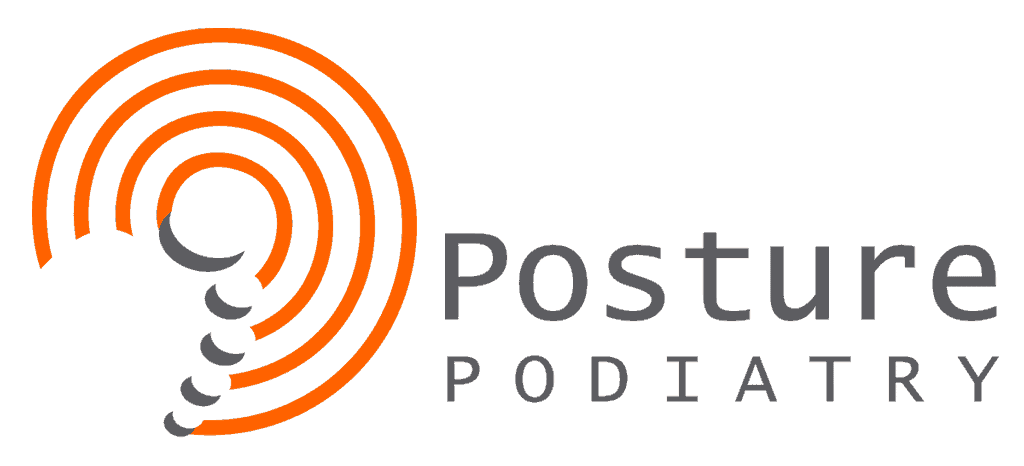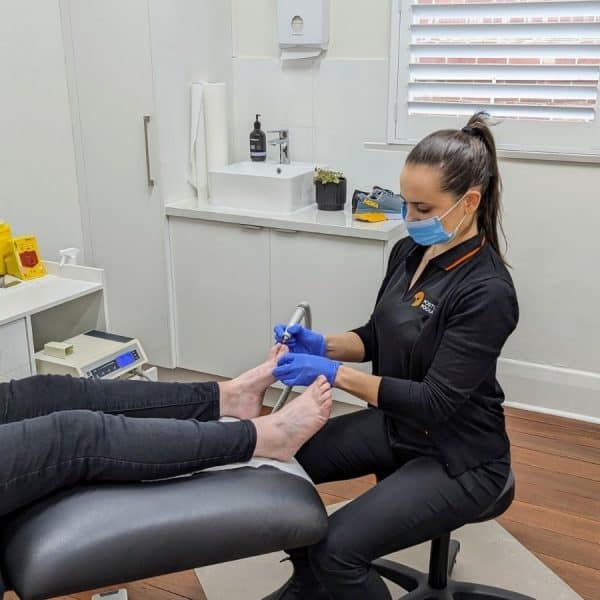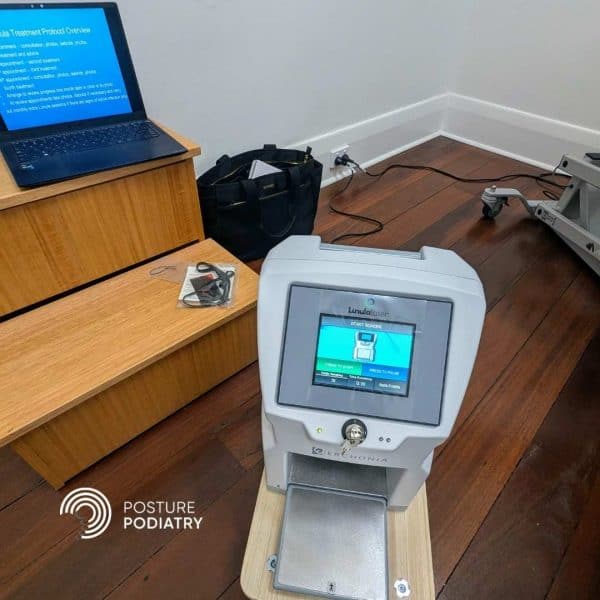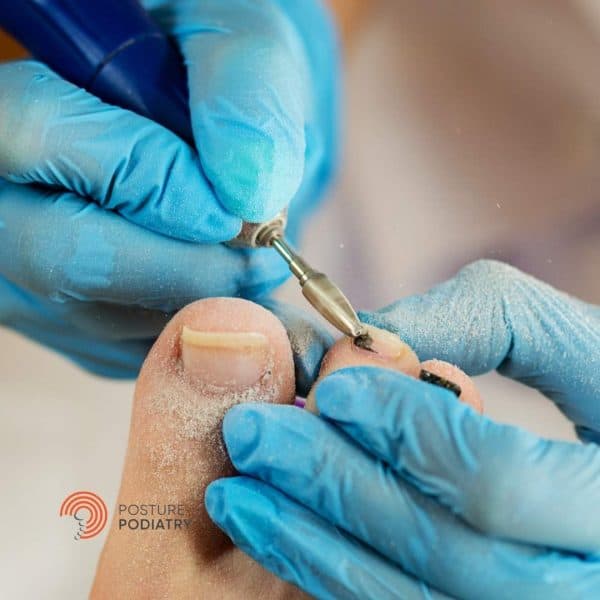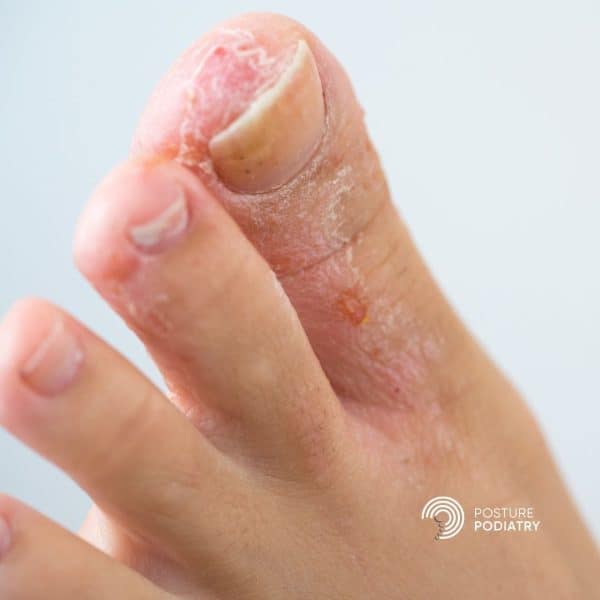Laser Treatment for Fungal Nails is Here
Tired of hiding your feet due to unsightly fungal toenails? Laser treatment might just be the game-changer you’ve been seeking. Traditional remedies have been frustratingly ineffective more often than not when treating toenail fungus. While oral antifungal medications such as Terbinafine have proven to be relatively successful when compared to topical creams and tinctures, there are significant risks and side effects associated with taking oral antifungals.
The other problem is possible drug interactions. Antifungal oral medication treatment comes with a long list of risks leaving many of our clients wondering if the cure is worse than the disease itself. Fortunately, the revolutionary path of eradicating fungal nails with laser precision has arrived and it comes without the nasty side effects and risks associated with oral antifungals. We’ll unveil the pathway that leads to fungal toenail treatment through the powerful technology of laser with the ultimate goal being toenail fungus elimination.

Find an Adelaide Podiatrist Near Me for Fungal Nail Laser Treatment
BOOK ONLINE or Call 8362 5900 to see how we can help.
What Treatment Options Exist for Fungal Toenails?
-
Nail Trimming and Filing
Before any treatment commences, patients with a fungal toenail infection will undergo podiatry treatment where the toenails are trimmed, and the nail plate is filed using a specific burr and podiatry drill. This process is painless. If paints or tinctures are used, this is usually the first step prior to topical application otherwise the chances of nail plate penetration are extremely low.
-
Over the Counter Nail Tinctures, Paints and Creams
Topical antifungal creams, paints and tinctures are the cheapest option but, unfortunately, they rarely work. Success rates range from 5 to 8% at best. Topical antifungals often overpromise and underdeliver results. Even with the best trimming and filing of nails, topical paints and tinctures rarely achieve success rates beyond 5 to 8%.
-
Oral Antifungal Medication
Oral medications such as Terbinafine have proven somewhat successful in recent years but the oral medications can come with serious risks and side effects. The oral antifungals need to be taken over a period of 3 to 6 months. Regular blood tests are required to ensure liver toxicity is avoided and drug interactions are possible if patients take other medications.
Find an Adelaide Podiatrist Near Me for Fungal Nail Laser Treatment
BOOK ONLINE or Call 8362 5900 to see how we can help.
-
Cold Laser Treatment for Fungal Toenails
The Lunula Laser is the only FDA-approved non-thermal laser (Cold Laser) for new clear nail growth. The Lunula Laser for toenail fungus is painless during treatment and there is no downtime or recovery time. The Lunula Laser for toenail fungus treatments requires only 12-minutes treatment per foot following nail preparation and there have been no serious side effects reported.
-
Surgical Removal of the Nail.
Podiatrists can consider surgical removal of the whole nail, however, this also carries with it risks which are associated with any type of surgery. Once the whole nail is removed and healing has completed, topical antifungals can then be applied to the nail bed in an attempt to prevent reinfection. This option is considered a last resort if all else fails.
Laser Treatment for Fungal Nails Using Lunula Cold Laser
Posture Podiatry now offers this type of laser treatment for fungal toenails for those battling with toenail fungus. This type of laser nail treatment provides the highest success rate without the nasty side effects associated with oral antifungal drugs.
How Does it Work?
The Lunula low-level cold laser treatment is considered the gold standard for treating nail fungus. The Lunula Laser machine produces two rotating laser beams that simultaneously cover a large area of the foot, completely treating all infected nails. The treatment is repeated weekly for four weeks, a commitment every patient must make to ensure the best possible chance of a successful nail result. A fifth and final treatment is then performed 4 weeks after the forth treatment.
Essentially, the Lunula laser works by utilising two lasers set at different frequencies. This laser nail fungus treatment works effectively to treat the infection both on the surface and below it, heading deep into the infected nails, nail bed, and surrounding skin, so you can rest assured knowing that the entire infection is being targeted.
Blue (405nm):
The violet/blue (405nm) laser beam triggers a photochemical reaction producing Reactive Oxygen Species (ROS) which is converted to hydrogen peroxide. Hydrogen peroxide is a natural antiseptic and works to kill off the toenail fungus.
Red (635nm)
The Red (635nm) laser has a dual function. Firstly, it releases ROS, converting to Hydrogen Peroxide, working in conjunction with the blue laser to kill the fungal nail infection. Secondly, the red laser beam targets the blood vessels and triggers another photochemical reaction producing Adenosine triphosphate which is then converted to Nitric Oxide.
The combined effects of the two Lunula laser beams aids the natural immune response, destroying the fungal toenail infection.
Find an Adelaide Podiatrist Near Me for Fungal Nail Laser Treatment
BOOK ONLINE or Call 8362 5900 to see how we can help.
During the Lunula cold laser procedure, there is no heat generated. It is the photochemical processes created by the two distinct lasers which act to create a hostile environment for the fungi, effectively killing them while leaving the healthy nail and surrounding skin unharmed.
The laser treatment requires approximately 12 minutes application to each foot following preparation and disinfection of the infected toenails by your Podiatrist. The whole treatment including nail preparation, nail treatment and laser application takes approximately 40 minutes, depending on the severity of the infection. There is no heat or pain with application of the laser.
Furthermore, one of the most appealing aspects of laser treatment is that it targets the root of the problem, eliminating the fungi directly at the source. This method not only addresses the current infection but also helps to prevent future occurrences, as the laser can promote healthier nail growth. As more individuals seek effective, lasting solutions for fungal toenails, laser treatment has become an increasingly popular option.
Step 1 – Nail Assessment
The suspected fungal nails are assessed. If there is any doubt as to the cause of the nail thickening, discolouration or distortion, our Podiatrists can take a sample of fungal nail and test it on the spot to determine whether or not fungal nail treatment is appropriate.
Step 2 – Fungal Nail Laser Treatment
Laser treatment for fungal nails can commence once the diagnosis is confirmed. Our Podiatry Assistants can provide you with a treatment quotation following the confirmation of any toenail fungus presence.
Find an Adelaide Podiatrist Near Me for Fungal Nail Laser Treatment
BOOK ONLINE or Call 8362 5900 to see how we can help.
Step 3 – Prevention of Reinfection
Once treatment commences, it’s important to prevent recontamination so we’ll provide clients with a detailed list of procedures and tips to ensure the likelihood of reinfection is as low as possible.
These procedures include:
- Wearing thongs or sandals when walking in public showers, pools, gyms and locker rooms to prevent tinea of the skin and nails.
- Replacing old shoes and socks or sterilising footwear and socks using an antifungal laundry detergent similar to ‘Canesten Antibacterial and Antifungal Hygiene Laundry Rinse’ available in supermarkets. Fungus can live in footwear, enabling reinfection.
- Disinfecting footwear: If your footwear is expensive or new, you can disinfect them using an ultraviolet (UV) shoe sanitizer or ozone cabinet. You can buy these online through our clinic or online.
- Using a clean pair of socks daily. This helps prevent fungal growth. Moisture-wicking socks can also help.
- Ensuring shoes fit correctly and don’t traumatise nails.
- Footwear should also be breathable made of leather or mesh.
- Keeping feet as dry as possible. Alternate shoes. Don’t wear the same shoes every day because funghi thrive in moist, humid environments. Allow shoes to dry out after wear for at least 24 to 48 hours.
- Using an antifungal powder or spray in your shoes. These products cannot treat a fungal nail infection, but will assist with preventing reinfection.
- Sanitising your nail clippers and keep your nail clippers to yourself. Never share nail clippers, shoes, socks, towels, and other personal items.
- Avoiding nail salons. If you insist on attending a nail salon, provide your own instruments so you can be sure no cross-contamination occurs. If not, the equipment can spread toenail fungal infections from one client to another.
- Keeping feet clean and dry. Dry your feet thoroughly with a clean towel after washing them.
- If your skin is dry, moisturise your skin to prevent small cracks in the skin.
- If you have tinea pedis (Athlete’s foot), which is a fungal infection of the skin, treat it as soon as possible to prevent the fungal infection of the skin from spreading to your nails.
Find an Adelaide Podiatrist Near Me for Fungal Nail Laser Treatment
BOOK ONLINE or Call 8362 5900 to see how we can help.
What is the Success Rate for Lunula Cold Laser Treatment for Fungal Nails?
Studies report success rates in the region of 75 to 80%. It’s important to understand there is no treatment available which provides a 100% guarantee of success. The success of treatment can be affected by many factors. Lunula laser treatment for fungal nails is considered the ‘gold standard’ for fungal nail treatment because of it’s high success rate and low risk. It can be applied without the nasty side effects and risks associated with oral antifungal drugs. If you’d like to more, simpley BOOK ONLINE or Call 8362 5900 to see how we can help you eliminate fungal toenails for good.
